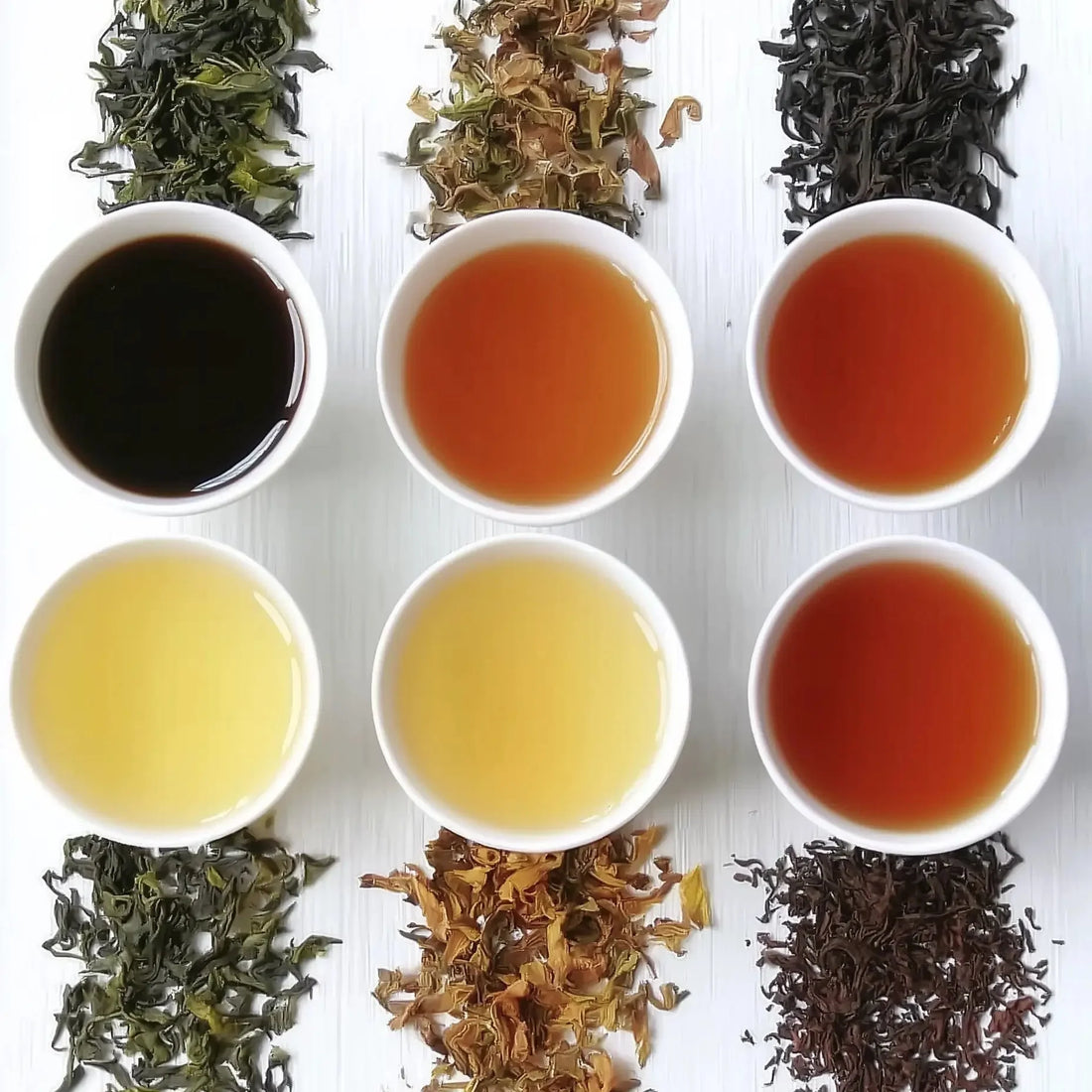
Tea Beginner FAQs: How to Start Your Loose Leaf Tea Journey
New to tea and not sure where to begin? This guide answers the most common beginner questions to help you start your tea journey with confidence — from choosing teaware to brewing your first cup.
How Do I Start?
If you’re curious about loose leaf tea, getting started is easier than you think. Here’s what you need:
- A tea cup
- A tea strainer, infuser, or teapot (avoid very small or novelty teapots)
- A way to boil water (electric kettles or stovetop pots work well)
- Some loose leaf tea – sample packs are ideal for beginners
General brewing tip: Use 1 teaspoon of tea per 6–8 oz (180–240 ml) of water and steep for 3–5 minutes. But don’t stress—taste is personal. The best tea is the one you enjoy.
How Do I Brew Tea?
- Heat water using a kettle or pot (avoid the microwave).
- Add 1 tsp of tea per cup into a tea infuser or teapot.
- Pour hot water over the leaves and let them steep.
- After steeping, remove the leaves and enjoy.
- Re-steep if your tea allows—many loose teas can be brewed multiple times.
Time & Temperature Guide
| Type of Tea | Water Temp | Steep Time |
|---|---|---|
| Black Tea | 205°F / 95°C | 3 – 5 mins |
| Oolong / White Tea | 185°F / 85°C | 3 – 4 mins |
| Green / Yellow Tea | 175°F / 80°C | 2 – 3 mins |
| Herbal Tea | 212°F / 100°C (boiling) | 5 – 15 mins |
What Is an “Infusion”?
An infusion is one steep — when the water meets tea leaves to extract flavor. Tea bags typically allow for one infusion, while high-quality loose leaf tea can be re-steeped multiple times.
Why Does My Tea Taste Weak?
Common reasons:
- Too little tea
- Water is not hot enough
- Steep time is too short
Why Is My Tea Bitter?
Usually caused by:
- Water that’s too hot
- Over-steeping
- Too much tea
Tip: Try shortening steep time by 20 seconds and adjust from there.
Be Careful With Small Infusers
Tea leaves expand while steeping. Avoid using cramped tea balls or mini infusers. Instead, use:
- Large basket infusers
- Gaiwans or open teapots with strainers
What Is Gongfu Cha?
Gongfu Cha is a traditional Chinese tea technique focused on skillful brewing using small amounts of water and short steep times for multiple infusions.
Key Characteristics:
- 3–8g of tea per 100ml water
- Short steeps: 5–30 seconds
- Used with small teapots or gaiwans (75–150ml)
- Multiple infusions per session
Use boiling water for pu’er and dark oolongs, but lower temperatures (85–90°C) for lighter teas. Weighing your tea helps with consistency.
What Is “Grandpa Style” Brewing?
This informal Chinese method involves placing tea leaves directly into a mug and refilling with hot water throughout the day. No filters, no straining.
Tips:
- Use large, whole leaves that sink easily
- Pick teas that don’t go bitter easily
- Add more leaves than usual and use slightly cooler water
What Is Cold Brew Tea?
Cold brew tea is made by steeping tea in cold water for hours, usually overnight, resulting in a smooth, refreshing flavor.
Cold Brew Method:
- 5g of tea per 1L of water
- Steep in the fridge for 8+ hours
- Strain before drinking
You can cold brew almost any tea, so experiment to find what you love!
How Many Types of Tea Are There?
There are six main tea types, categorized by how the leaves are processed:
- Green Tea – Heat-treated to prevent oxidation (steamed or pan-fired)
- Yellow Tea – Lightly oxidized using a unique “sweltering” step
- White Tea – Minimally processed, gently withered and dried
- Oolong Tea – Partially oxidized, often rolled or twisted
- Black Tea – Fully oxidized for a bold, robust flavor
- Fermented Tea – Includes ripe pu’er and heicha, aged through microbial fermentation
Each category has dozens of regional and stylistic variations—don’t be afraid to explore!
How Should I Store Tea?
Tea is sensitive to air, light, heat, moisture, and strong odors. Store it in:
- Airtight containers (metal tins are best)
- Cool, dry, dark spaces
- Avoid glass jars unless stored in a cabinet
Want to explore more? Try our Beginner Tea Sampler Box or discover Gongfu Brewing Tools for a deeper experience.
